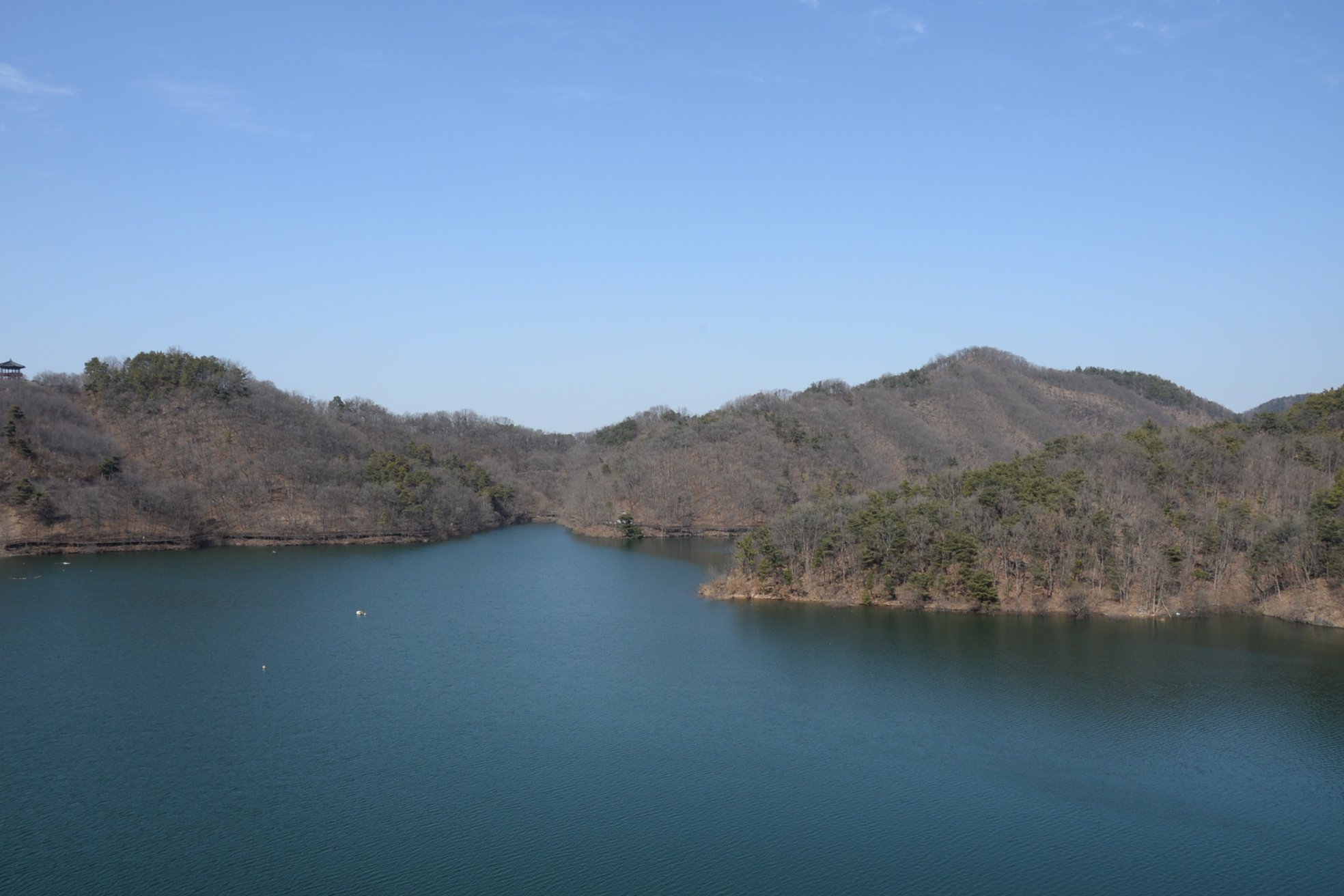Nongdari (농다리)
Reportedly the oldest standing bridge in the Republic of Korea, the stone span at Jincheon called Nongdari was built during the Goryeo Period (918-1392 AD). The bridge consists of massive flat stone slabs supported by solid stone pylons for a distance of 70 meters allowing a dry crossing of the fast-flowing Baeksok Stream. A marvel of engineering that has stood the test of time, the bridge provides one of few remaining examples of how early Korean kingdoms conceived of and constructed necessary infrastructure. Oh…and if that wasn’t enough, there’s a HUGE cable bridge spanning the lake in the hills behind the medieval bridge at Nongdari!
This is what you first see when walking up from the parking lot…and its a bit underwhelming. Yet this is NOT Nongdari but appears to be something added much more recently to facilitate pictures of and access to the artificial waterfall across the way.
Still…the white water in the picture above does provide some indication how fast the water flows down Baeksok Stream, necessitating the need for a bridge in the first place.
About 200 meters downstream, Nongdari stands, as sturdy as the day it was first laid down, over 600 years ago.
The stone pylons support the massive flat slabs visible here which are wide enough for a horse to cross.
The name threw us a bit until some quick research indicated the “Nong” in Nongdari means centipede. Since “dari” is a homonym for both “leg” and “bridge” . . . the cleverly named Nongdari refers to a bridge that looks a bit like a centipede.
Across the Goryeo Era bridge and up the hill takes you to another—uh…very different—bridge! Spanning the scenic Chopyeong Reservoir, you can cross the 550 meter bridge to the other side, either just for fun or to continue hiking the many trails there.
I will warn those of you who suffer from motion sickness . . . when a lot of people cross at once the bridge sways . . . ALOT!
Yet the views of Chopyeong Reservoir from the high crossing are spectacular, even in the subdued colors of late winter.
* As a side note, there’s not much out there on the Goryeo Era, but if you’re at all interested in that fascinating period in Korean history I HIGHLY recommend “The Goryeo-Khitan” war on Amazon Prime (through KOCOWA) or Netflix. The compelling story makes for great binge-watching!
Gilsangsa (길상사)
A very short drive from Nongdari we found quite by accident the official shrine to one of the most important figures in Korean history, General Kim Yu-sin. General Kim led the Kingdom of Silla to victory over Baekje, Goguryeo, and then Tang China. He is considered the driving force behind the first true unification of the Korean Peninsula, facilitating the establishment of what has come to be known as the Unified Silla period in history. For those of you “Great Queen Seondok” fans (highly recommended, by the way!), Kim Yu-sin is no stranger, as he was one of the main characters of that entertaining interpretation of Seondok’s rise to power. For those of you less up on your K-drama trivia, Kim’s family originally hailed from Geumgwan Gaya, an independent state centered near Gimhae that submitted to the rising power of Silla in 532 AD. By the time of Kim’s birth in 595, he was descended from Gaya royalty on his mother’s side and Silla royalty on his father’s. Born and raised in Jincheon, the shrine to this auspicious individual has been destroyed and rebuilt many times, coming to rest here at Gilsangsa. General Kim died and, despite having never been a king, was given a royal burial in 673 in Gyeongju, the capital of Silla.
The main hall at Gilsangsa. Took three pictures from this spot and somehow they all came out crooked . . . sorry!
Kim Yu-sin’s official portrait hanging in the central hall at Gilsangsa.



















